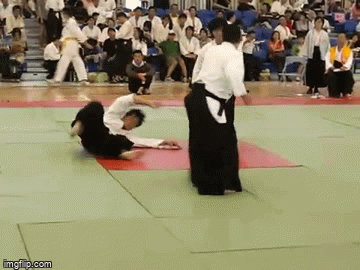Pretty much everything is applicable to a modern context because the human body hasn't changed. It still breaks in exactly the same way now as it did 2,000 years ago. If there is a challenge, it's knowing which techniques are applicable to any given circumstance and how to apply them within that context. Some techniques are far easier to apply with a greater likelihood of success. The
Term of Art for these has become "High Percentage Techniques." There are other techniques which may be more difficult to apply. And there are some techniques which apply very infrequently in a modern context. As an extreme example, a technique for disarming a swordsman seems like it would be a pretty infrequent need. Nevertheless there are, bizarrely, still sword attacks (though rare), and (slightly more commonly) machete attacks. But more common still are clubs held and swung in ways analogous to a sword for which the same disarming technique may be applicable.
So pretty much every technique is still "applicable" to a modern context. But I would recommend you try to figure out which are the most likely and common applications and study them first. Then branch out to the ever more unlikely or esoteric.
The thing is, that this is not a particularly modern "problem." Societies have been changing since the beginning and what worked 100 years previously, for any given society at any given time, may no longer be applicable to them. Changing technologies, such as the introduction of bronze, or later iron, then steel, often changed which techniques were more common or applicable. Changes in social norms or laws could change what techniques were seen as viable and which would get you ostracized or face legal repercussions. Even differences in cultural norms from one similar culture to another often changes what techniques and strategies were likely or applicable. For example, in German and Austrian culture, from at least late 18th C. up until the mid-20th C., a dueling scar on the cheek, a "schmisse" was a badge of honor, mark of a brave man (and good husband material), and was absolutely
required to get anywhere in a military career. It was a badge of honor. Conversely, in 19th C. Spanish culture (overlapping time periods), a dueling scar on the cheek was
señalada (a "mark"), of someone who was a scallywag, an inferior person, and a bad fighter. It was a mark of shame. (ref:
Bowie Knife Fights, Fighters & Fighting Techniques. . .: More on Spanish Knife Culture ). Yeah, there was a little bit of truth mixed in with the Inigo Montoya character.

But that changes how duels were fought between the two cultures. One had duels which were custom designed to create a facial scar because the person wanted one. The other would mark for life as a loser.
And that is just a few examples. What about when technology or social norms changes armor and clothing. You can see that happening in the U.S.
right now. Ballistic resistant body armor is becoming more common. It started with cops in the 70's with Second Chance and has slowly progressed to where even Rent-a-Cop "Polyester Police" security guards are often required to wear it. Right this second, body armor is one of the hottest selling products in the Firearms-for-Self-Defense community. Websites like TacticalSh*t run specials and are often sold out. That's changing what martial techniques are viable. A knife-thrust to the chest is less likely to strike home; you may need to choose a different target. It
certainly impacted the martial use of firearms in the 70's by forcing what has become known as the Mozambique Drill (aka: "Failure to Stop Drill" or "Failure Drill"). But the funny thing is,
it's not new by any means! You can look at the Fechtbucks (medieval "fight manuals") and see knights fighting in armor and having to deliberately target "not the chest." You can read accounts and material from the Napoleonic era, where breastplates were common, and see how fighters would have to deliberately target "not the chest," even with firearms of the day. (And I've come across some wonderful information tracking the same for combat use in WWI, including military specs for ballistic resistant personal armor!)
Everything that's old is new again. And what's "high percentage" now might not be in 50 years, or 20, or maybe not even in 10. Society, technology, laws, and social norms are always in a state of flux. It's not particularly hard to imagine the U.S. culture developing to regard BJJ as a "thug's pastime" and applying significant social pressure against it. Just combine the fact that it is (from reports I've seen) often thought of in Brazil as a "thug" martial art with the social pressure associated with smoking or racism. Et voila!
Peace favor your sword,
Kirk










